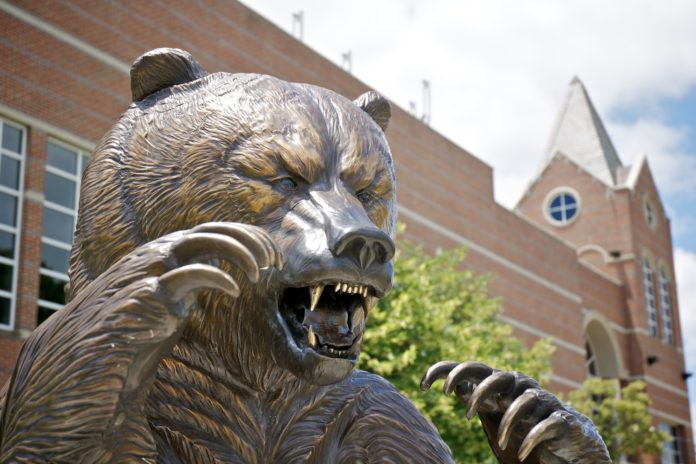NEVIS, West Indies — An Anglo-American team of archaeologists, including a Mercer University professor, has discovered ruins of the legendary English colonial seaport of Jamestown on the island of Nevis. The town was reputedly destroyed by an earthquake and tidal wave in 1690, and often historians have claimed that the city was lost beneath the waters of the Caribbean. Eric Klingelhofer, a Mercer University professor in Macon, Ga., and Carter Hudgins, professor at the University of Mary Washington in Fredericksburg, Va., worked over a four-year period with teams of their students as well as researchers from the University of Southampton in London to unearth the ruins of the port.
“Jamestown lies buried several hundred yards from the modern shore on the edge of a former bay now filled with sand and sediment, not underwater, as had been surmised,” said Klingelhofer, professor of History at Mercer. “This is a tremendous archaeological find that we hope will shed light on the British colonization of the West Indies and help build a link to the past.”
The nine-person dig served as a field school for students from the U.S. colleges and partnered with the Nevis Heritage Project (NHP), directed by Roger Leech, professor at the University of Southampton in England. Since 2000, the NHP has carried out an historical archaeological survey, yielding evidence for early Charlestown and the many sugar plantations whose ruins dot the eastern Caribbean island.
At Jamestown, the Anglo-American team has determined that the seaport and its protecting fort stretched 250 yards along the shore and may have spread back from the water by as little as 50 yards. Inland, the NHP located the stone foundations of merchant’s houses with numerous artifacts that show how the 17th-century inhabitants lived. The artifacts include: onion-shaped wine bottles, crystal wine glasses, German stoneware jugs, highly decorated Delft plates, and even fine porcelain from China. Handmade utility vessels testify to the presence of workers of African origin. Clay tobacco pipes, many from Bristol, were commonplace. But at the former shoreline, the team uncovered a warehouse whose walls had been twisted and broken by a cataclysmic event. This, and the presence of intrusive marine sands, demonstrated to the archaeologists that the account of the 1690 earthquake was accurate and that the story of the tsunami may be true as well.
The four-year project is now completed, and Klingelhofer and Hudgins observed that the site is relatively undamaged by modern development. They have recommend that the entire town be set aside as a National Heritage Area.
“Jamestown on Nevis is a unique archaeological site – an entire buried town from the early days of English colonization,” Hudgins said. “It may prove as valuable to the history of the Caribbean as Jamestown in Virginia is to the history of the U.S.”
John Guilbert, director of the Nevis Historical and Conservation Society (NHCS), speaking on behalf of the island community, said: “The NHCS supports these efforts as part of our mandate to preserve the history of Nevis and our commitment to heritage tourism. We are pleased that the U.S. team of Klingelhofer and Hudgins has continued over the past four years to work with the Nevis Heritage Project to tell us the real story of Jamestown. We look forward to putting their research in print for reference for historians, the people of Nevis and future tourists.”
About Mercer University:
Founded in 1833, Mercer University is a dynamic and comprehensive center of undergraduate, graduate and professional education, the University has 7,300 students; 11 schools and colleges – liberal arts, law, pharmacy, medicine, business, engineering, education, theology, music, nursing and continuing and professional studies; major campuses in Macon and Atlanta; four regional academic centers across the state; a university press; teaching hospitals in Macon and Savannah; an educational partnership with Warner Robins Air Logistics Center in Warner Robins and Piedmont Healthcare in Atlanta; an engineering research center in Warner Robins; a performing arts center in Macon; and a NCAA Division I athletic program. For more information, visit www.mercer.edu.
###










